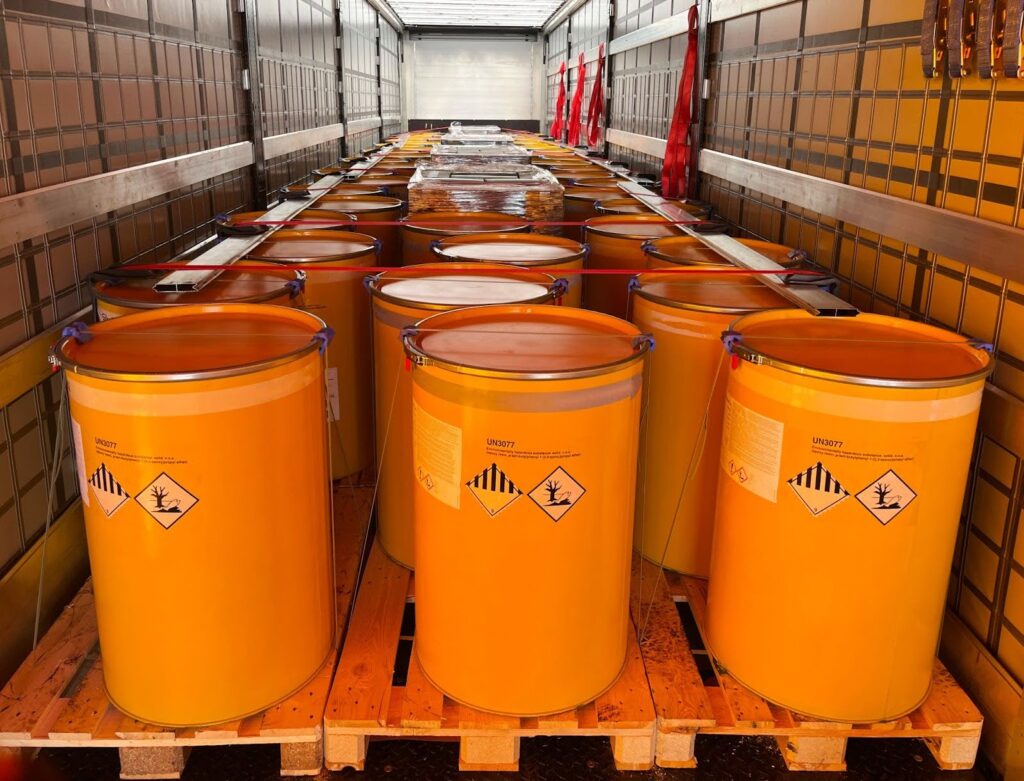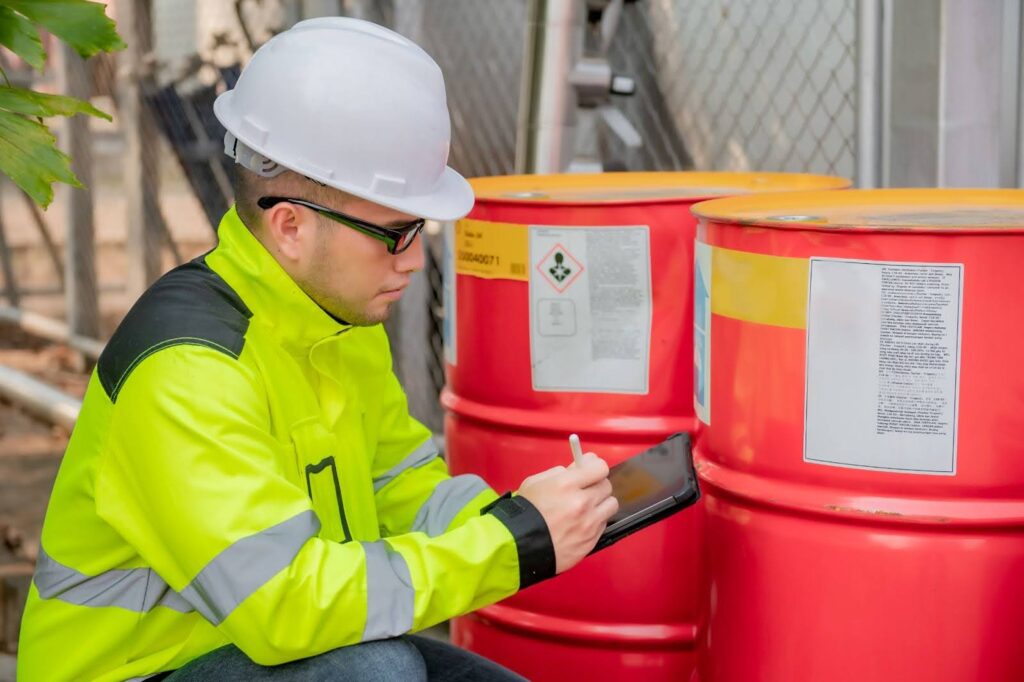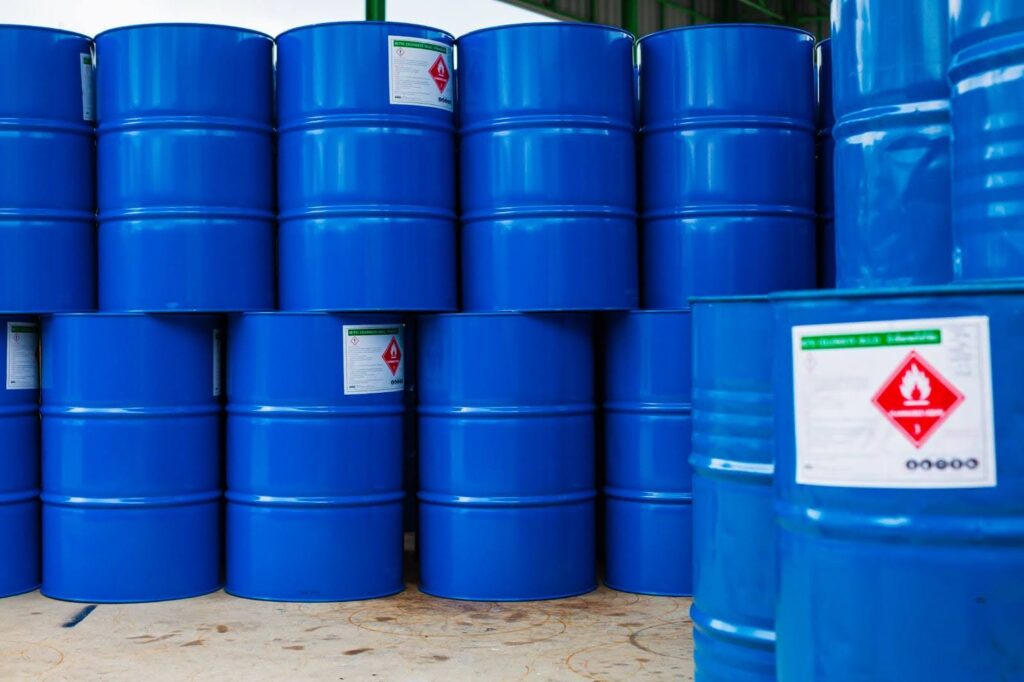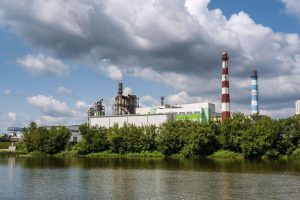Hazardous Waste Colour Codes That You Need To Know
May 22, 2025

When it comes to handling hazardous waste safely, colour coding can make a difference. But, only if it is done right.
If you are in healthcare, manufacturing, engineering, or environmental safety in Singapore, understanding what these colour codes mean (and when they do not apply) is key to staying compliant and protecting people.
This guide breaks down what hazardous waste colour codes mean, where they are used, and why colour is sometimes not the main focus, especially outside of hospitals.
Read more: What Are the Effects of Hazardous Waste on the Environment and Humans?
Healthcare Waste Is the Only Sector with Standard Colour Codes in Singapore
In Singapore, colour coding is officially regulated only in the healthcare sector. Medical waste carries a high risk of infection and needs to be separated clearly at the source. This is not just for compliance, but for everyone’s safety.
Here are the standard colour codes used in medical facilities:
- Yellow
Infectious waste like swabs, dressings, and blood-contaminated items. - Red
Anatomical waste (e.g. human tissues or body parts). - Blue
Expired or unused pharmaceuticals. - White/Translucent Puncture-Proof
Sharps such as needles and scalpels. - Black
Non-infectious general waste from healthcare settings.
These colours help healthcare workers and cleaning staff to instantly recognise the type of waste and handle it safely, with the right disposal protocols.
Industrial Waste Does Not Follow a Standard Colour Code System
Unlike the medical field, industrial and commercial sectors in Singapore do not follow a standardised colour coding system for hazardous waste.
If you deal with oils, solvents, acids, alkalis, or heavy metals, colour coding is not mandated by the National Environment Agency (NEA).
Instead, the regulations focus on the below to ensure safety, traceability, and legal compliance without depending on colour codes:
1. Proper Labelling
Every container must be clearly labelled with essential details. This typically includes:
- The chemical name of the waste (e.g. “used engine oil”, “hydrochloric acid”).
- UN numbers based on global transport and hazard standards.
- Relevant hazard symbols (like corrosive, flammable, or toxic).
- The company name and source of generation.
These labels help waste handlers, transporters, and treatment facilities quickly understand what they are dealing with. This reduces the risk of accidents and ensures that waste is treated appropriately.
Read more: List of Hazardous Wastes by NEA
2. Approved Containers That Can Withstand the Waste
Not all containers are suitable for all types of waste. In Singapore, waste must be stored in corrosion-resistant and leak-proof containers. Especially if the material is reactive, flammable or acidic. For instance:
- Acids and alkalis are stored in high-density polyethylene (HDPE) drums.
- Oily waste might go into steel containers with secure lids.
- Solvents are often kept in certified flammable liquid drums.
This helps to prevent leaks that could contaminate the environment or cause fires in storage areas.
3. Segregation by Compatibility
Just like certain chemicals should never be mixed in a lab, the same rule applies to waste. Incompatible wastes, such as acids and cyanides, must be stored separately to avoid dangerous reactions. Facilities must also separate:
- Flammable from oxidising waste
- Liquids from solids
- Inorganic from organic waste
Segregating waste properly ensures that dangerous chemical reactions do not occur, especially during transport or treatment.
4. Licensed Handling
Only licensed Toxic Industrial Waste Collectors (TIWCs) are authorised to collect, transport, treat, or dispose of hazardous industrial waste in Singapore. This process is tightly regulated by the National Environment Agency (NEA).
From the moment waste is generated to its final treatment, every stage must be documented and traceable. NEA requires proper waste declarations, disposal manifests, and treatment records, all of which must be readily available for inspection.
This is where GreenTec Energy (GTE) comes in. As an NEA-licensed waste disposal partner in Singapore, we ensure your toxic industrial waste is stored, transported, and treated in full compliance. Reach out to our team via call at +65 6261 1377 / +65 6261 1947, or email us at sales@gte.sg to explore safe, customised solutions for your facility.
Read more: Guide 101: How to Use the Toxic Industrial Waste E-tracking by NEA
So Why Is There No Standard Colour Code?
Unlike the medical sector, which uses colour-coded bags or bins for fast visual identification, industrial waste comes in a wide variety of forms and chemical hazards. A single colour cannot represent the complexity of risks involved.
Also, since containers are often large drums, IBC tanks, or sealed vessels, there is more surface area to apply clear hazard labels and printed markings. This makes colour coding less essential.
That said, some companies do choose to use their own internal colour coding system to improve on-site safety and staff awareness. For example:
- Red: Flammable liquids like solvents
- Yellow: Corrosive substances like acids or alkalis
- Blue: Oily waste or used lubricants
- Green: Non-hazardous or recyclable materials
But these are not enforced by law, and they differ from one facility to another. That is why relying solely on colour without proper labelling is risky.
Colour codes are helpful, but they are no substitute for correct labels, safety data sheets (SDS), and clear handling instructions.
Proper hazardous waste handling protects not just your business, but also the health and safety of your people.
Read more: Toxic Waste Management - An Overview
Understanding Toxic Industrial Waste Classifications
In Singapore, the NEA classifies toxic industrial waste (TIW) under various categories based on its chemical properties and risks. These include:
- Acid/alkali waste
- Waste oil
- Organic solvents
- Sludges containing heavy metals
- Cyanide waste
- Spent catalysts, batteries, or chemical containers
Each type requires specific handling and treatment procedures. The Code of Practice SS 603:2021 outlines how these should be stored, labelled, and disposed of, with no requirement for colour coding.
Read more: MANAGEMENT OF TOXIC INDUSTRIAL WASTE IN SINGAPORE / Types Of Hazardous Waste Disposal Methods Usually Used
What This Means for Your Business or Facility
If your business generates industrial hazardous waste, focus on:
- Using the right containers for each waste type.
- Ensuring clear, compliant labelling on all waste.
- Keeping accurate documentation for disposal.
- Working with a licensed TIWC for safe removal.
Colour coding can be useful as a backup system, but it is not a legal safeguard. What matters most is proper classification and handling.
Managing hazardous waste correctly protects your team, your business, and the environment.
GreenTec Energy (GTE) is a licensed and eco-friendly waste disposal company in Singapore. We are trusted by industrial partners for safe, compliant toxic waste management. Reach out via call at +65 6261 1377 / +65 6261 1947, or email us at sales@gte.sg to explore tailored solutions for your site.
Common Mistakes When Using Colour Codes for Hazardous Waste
Many businesses assume that colour alone is enough. Here are some pitfalls to avoid:
- Using healthcare colour codes in non-healthcare settings.
- Assuming your internal colour system matches regulatory requirements.
- Skipping labels because the container is colour-coded.
- Not training new staff on your facility’s colour coding rules.
Remember, always combine any colour-coding with clear, NEA-compliant labelling and documentation.
The Bottom Line
In Singapore, colour coding for hazardous waste is only mandatory in the healthcare sector. For everyone else, especially industrial players, the priority is proper labelling, segregation, and working with licensed collectors.
If your facility chooses to implement a colour code for internal convenience, make sure it complements (not replaces) regulatory best practices.
Looking for a reliable partner to manage your industrial hazardous waste? GreenTec Energy (GTE) combines compliance, expertise, and environmental care in every collection. Speak to our team and let us support your waste safety goals today.
Explore our blog section to learn more.
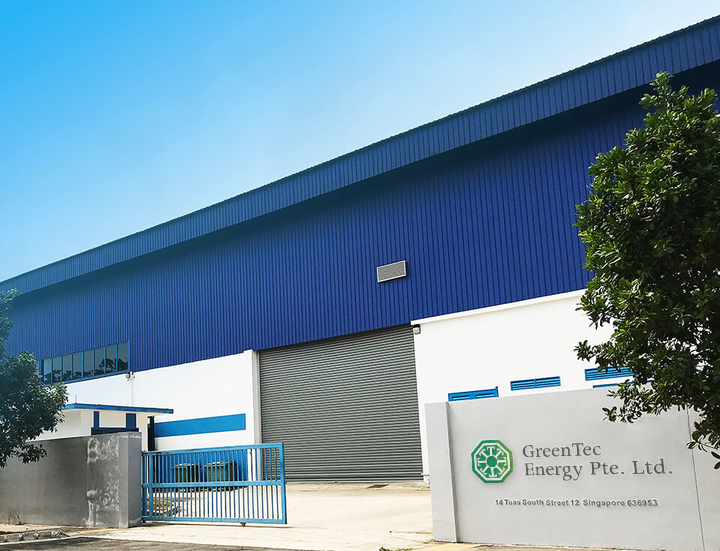 GreenTec Energy Pte Ltd (GTE) is a waste management company located in Tuas, Singapore.
GreenTec Energy Pte Ltd (GTE) is a waste management company located in Tuas, Singapore.
Our service includes Industrial waste, Oily waste, Marine waste.
To provide a hassle free solution to our customer is always the key approach and to ensure a win-win situation towards. As a NEA approved environmental company in Singapore, we take all our services seriously and to ensure maximum safety with compliances applied. Every step of our disposal processes are also designed to meet NEA & SCDF requirements, with latest treatment facilities and laboratories to test and treat all incoming waste before disposal.
GTE operates a total land area of about 100,000sqft at 14 Tuas South Street 12 Singapore 636953. With our comprehensive logistics and transportation fleet, we provide prompt and efficient services in transportation of waste to our premises.



